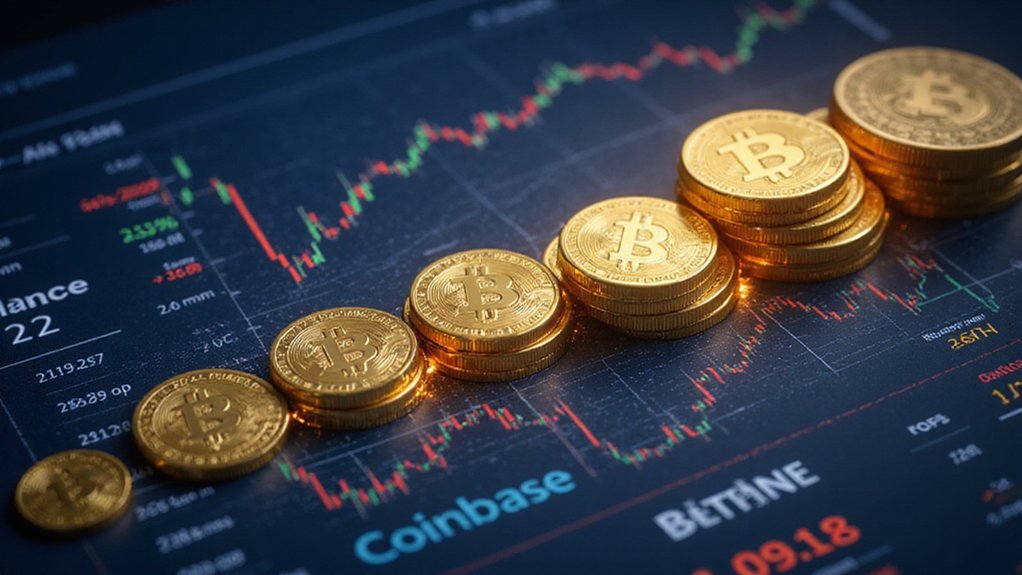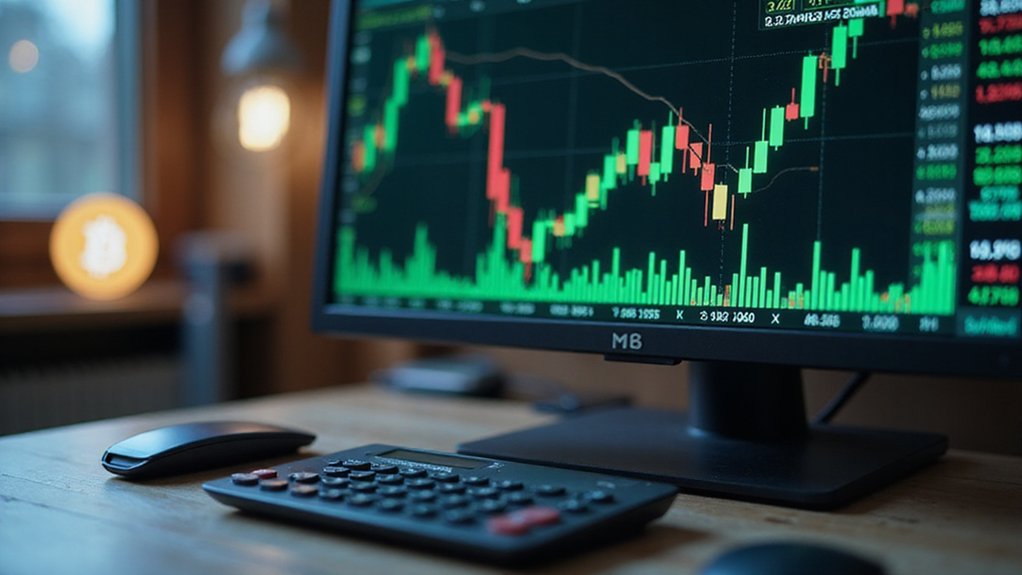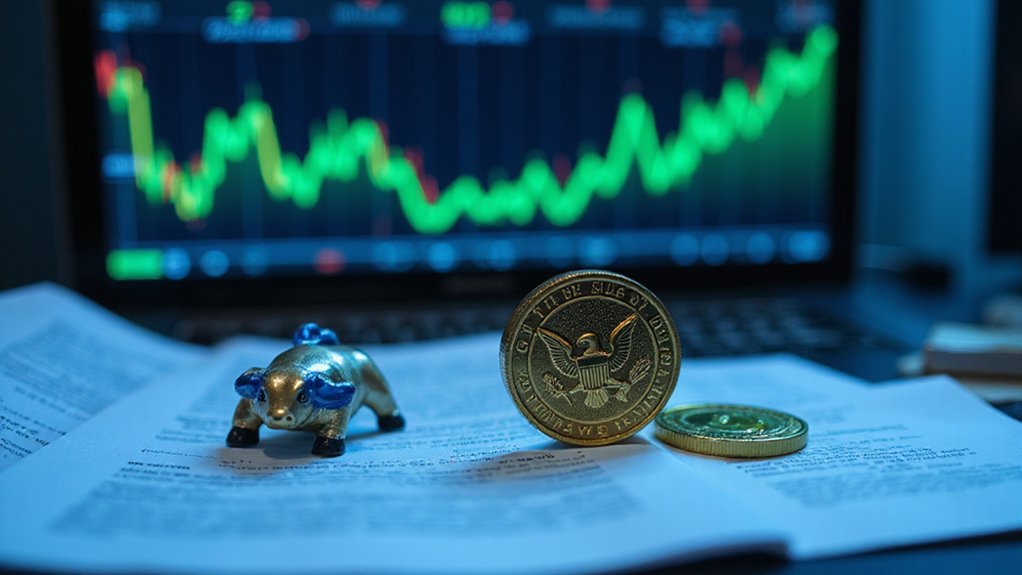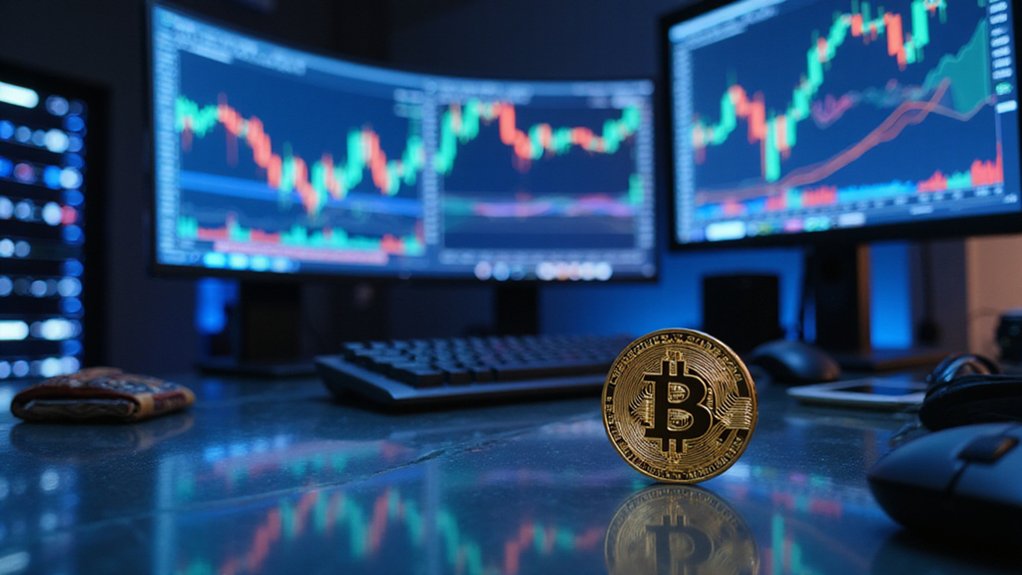As of January 2025, Bitcoin exchange reserves have reached their lowest levels since 2018, with only 2.35 million BTC (11.8% of circulating supply) held on trading platforms. This represents a significant decline from 3.1 million BTC in January 2022. Coinbase leads as the largest custodian with approximately 560,000 BTC, followed by Binance with 480,000 BTC. The top five exchanges now control over 70% of exchange-held Bitcoin. These trends reveal important implications for market volatility and price movements.
As Bitcoin's ecosystem continues to mature, exchange reserves have reached their lowest levels since 2018, with only 2.35 million BTC held on trading platforms as of January 2025. This figure represents just 11.8% of Bitcoin's circulating supply, a significant decline from the 3.1 million BTC held on exchanges in January 2022. The steady outflow indicates a fundamental shift in how Bitcoin holders manage their assets.
Coinbase maintains its position as the largest custodian of exchange-held Bitcoin with approximately 560,000 BTC, followed by Binance with 480,000 BTC. Bitfinex, Kraken, and Gemini round out the top five with 290,000 BTC, 185,000 BTC, and 140,000 BTC respectively. These five exchanges collectively control over 70% of all exchange-held Bitcoin, highlighting the concentration of liquidity among major players.
Major exchanges dominate Bitcoin custody, with five platforms controlling 70% of all exchange-held BTC.
The exodus of Bitcoin from exchanges can be attributed to several factors. Institutional investors have increasingly adopted specialized custody solutions that offer improved security features. Simultaneously, decentralized exchanges have captured market share, while Bitcoin ETFs continue to accumulate substantial holdings.
Security concerns following high-profile exchange hacks have also prompted users to adopt self-custody solutions. On-chain metrics reveal that many investors prefer long-term holding of Bitcoin in cold wallets, moving away from keeping assets on exchanges.
Regional trends reveal varying patterns across global markets. U.S. exchanges have experienced a 35% decline in reserves since 2022, while Asian and European exchanges saw decreases of 28% and 22% respectively. Notably, Latin American exchanges have bucked the trend with an 18% increase, reflecting growing adoption in developing markets.
From a market perspective, declining exchange reserves carry significant implications for Bitcoin's price dynamics. Reduced available supply on exchanges potentially creates conditions for increased volatility and supply shocks during periods of high demand.
The negative exchange netflow of 250,000 BTC in 2024 has contributed to reduced selling pressure, which many analysts interpret as a bullish indicator for long-term price action. Bitget currently demonstrates exceptional financial stability with a 322% reserve ratio for Bitcoin, holding 19,393 BTC against 6,030 BTC in user liabilities.
Looking ahead, projections suggest exchange reserves will continue their downward trajectory, potentially reaching 2 million BTC by the end of 2025. By 2026, analysts expect a 50% reduction from the 2022 peak.
Industry experts anticipate decentralized exchanges will capture 15% of market share by the end of 2025, though regulatory developments could significantly impact these projections. Most analysts consider 1.5 million BTC to be the floor for exchange reserves, below which liquidity concerns may arise.
Frequently Asked Questions
How Do Exchange Reserves Impact Bitcoin Price Volatility?
Exchange reserves impact bitcoin price volatility significantly.
During the 2021 bull run, major exchanges saw reserves drop by 20%, coinciding with a 300% price increase. Lower reserves reduce liquidity in markets, creating thinner order books where trades cause larger price swings.
When reserves decrease, available supply tightens, amplifying upward price movements. Conversely, sudden inflows to exchanges often precede sell-offs and increased volatility.
Technical analysts track these metrics to predict potential price acceleration points in either direction.
Which Exchanges Have the Strongest Security for Stored Bitcoin?
Leading exchanges with superior Bitcoin security include Coinbase, Gemini, and Kraken.
These platforms implement comprehensive cold storage systems with multi-signature wallets requiring multiple approvals for transactions. Security is further improved through mandatory two-factor authentication, hardware security keys, and rigorous KYC procedures.
Insurance coverage from providers like Lloyd's of London offers protection exceeding $1 billion for top exchanges' cold storage. Regular external audits verify security practices and reserves, while SOC 2 Type II compliance guarantees data security standards are maintained.
What Percentage of Bitcoin's Total Supply Is Held Offline?
"What lies beneath the surface often holds the greatest value."
According to current data, approximately 80-85% of Bitcoin's total supply is held offline in cold storage solutions. This represents roughly 16.5 million BTC stored in self-custody wallets as of 2025.
Hardware wallets dominate this landscape, accounting for 60% of offline storage methods. The trend toward cold storage has grown steadily, with a 15% year-over-year increase since 2023, reflecting growing concerns about exchange security and custody sovereignty.
Are There Regulatory Concerns About Bitcoin Concentration on Certain Exchanges?
Regulatory concerns about Bitcoin concentration on exchanges have intensified significantly. The SEC monitors large BTC holdings on major platforms due to market manipulation risks. Proposals suggest limiting exchange reserves to 5% of circulating supply, while the G20 discusses global custody standards.
Authorities worry about systemic risks, as the top five exchanges hold an estimated 10-15% of BTC supply. This concentration raises questions about market integrity, consumer protection, and potential contagion effects if major platforms experience failures.
How Can Investors Verify Exchange Bitcoin Reserve Claims Independently?
Investors can verify exchange Bitcoin reserves independently through four primary methods.
Merkle tree verification allows users to confirm their balances against published root hashes without exposing other users' data.
On-chain address monitoring enables tracking of exchange wallets via blockchain explorers.
Third-party audit reports provide external validation from professional firms.
Finally, standardized Proof of Reserves protocols like Chainlink PoR offer automated on-chain verification through smart contracts and open APIs for real-time reserve confirmation.
References
- https://thecurrencyanalytics.com/bitcoin/bitcoins-exchange-reserves-hit-multi-year-low-161152
- https://www.globenewswire.com/news-release/2025/02/27/3033476/0/en/Bitget-Updates-Proof-of-Reserves-for-February-2025-Reserve-Ratios-Increase-to-186.html
- https://www.revolut.com/crypto/price/btc/usd/?amount-to=100
- https://coinedition.com/bitcoins-national-hoards-top-countries-stockpiling-btc-in-2025/
- https://www.investopedia.com/where-analysts-think-bitcoin-is-headed-in-2025-update-8762665
- https://coinstats.app/news/bf19a205ba76b527773f5b6c05cedc5c7463f6bede36357b3b27d1f9484978a3_1046-Billion-Bitcoin-Exchange-Reserves-ExodusHow-This-Shocking-Trend-Could-Trigger-a-Massive-Price-Surge-in-2025/
- https://www.newtrading.io/cryptocurrency-statistics/
- https://www.security.org/digital-security/cryptocurrency-annual-consumer-report/
- https://coindcx.com/blog/coindcx-news/global-momentum-countries-exploring-bitcoin-reserves-in-2025-15-january-2025/
- https://honors.umkc.edu/documents/lucerna-vol18.pdf





